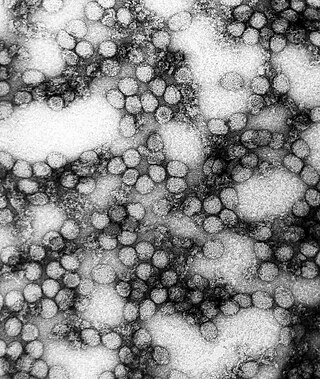
Yellow fever is a viral disease of typically short duration. In most cases, symptoms include fever, chills, loss of appetite, nausea, muscle pains—particularly in the back—and headaches. Symptoms typically improve within five days. In about 15% of people, within a day of improving the fever comes back, abdominal pain occurs, and liver damage begins causing yellow skin. If this occurs, the risk of bleeding and kidney problems is increased.

The John Newbery Medal, frequently shortened to the Newbery, is a literary award given by the Association for Library Service to Children (ALSC), a division of the American Library Association (ALA), to the author of "the most distinguished contributions to American literature for children". The Newbery and the Caldecott Medal are considered the two most prestigious awards for children's literature in the United States. Books selected are widely carried by bookstores and libraries, the authors are interviewed on television, and master's theses and doctoral dissertations are written on them. Named for John Newbery, an 18th-century English publisher of juvenile books, the winner of the Newbery is selected at the ALA's Midwinter Conference by a fifteen-person committee. The Newbery was proposed by Frederic G. Melcher in 1921, making it the first children's book award in the world. The physical bronze medal was designed by Rene Paul Chambellan and is given to the winning author at the next ALA annual conference. Since its founding there have been several changes to the composition of the selection committee, while the physical medal remains the same.
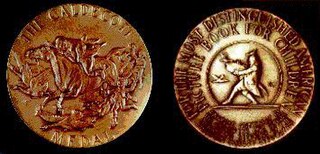
The Randolph Caldecott Medal, frequently shortened to just the Caldecott, annually recognizes the preceding year's "most distinguished American picture book for children". It is awarded to the illustrator by the Association for Library Service to Children (ALSC), a division of the American Library Association (ALA). The Caldecott and Newbery Medals are considered the most prestigious American children's book awards. Besides the Caldecott Medal, the committee awards a variable number of citations to runners-up they deem worthy, called the Caldecott Honor or Caldecott Honor Books.
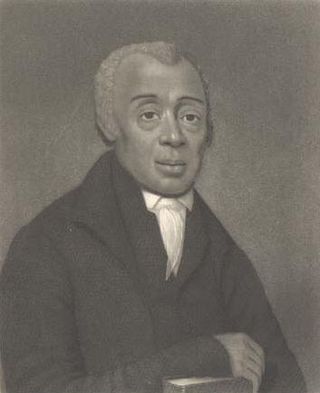
Richard Allen was a minister, educator, writer, and one of the United States' most active and influential black leaders. In 1794, he founded the African Methodist Episcopal Church (AME), the first independent Black denomination in the United States. He opened his first AME church in 1794 in Philadelphia.

Laurie Halse Anderson is an American writer, known for children's and young adult novels. She received the Margaret A. Edwards Award from the American Library Association in 2010 for her contribution to young adult literature and in 2023 she received the Astrid Lindgren Memorial Award.

Number the Stars is a work of historical fiction by the American author Lois Lowry about the escape of a family of Jews from Copenhagen, Denmark, during World War II.

Paul Fleischman is an American writer of children's books. He and his father Sid Fleischman have both won the Newbery Medal from the American Library Association recognizing the year's "most distinguished contribution to American literature for children". For the body of his work he was the United States author nominee for the international Hans Christian Andersen Award in 2012.

James John Patrick Murphy was an American author. He wrote more than 35 nonfiction and fiction books for children, young adults, and general audiences, including more than 30 about American history. He won the Margaret A. Edwards Award from the American Library Association in 2010 for his contribution in writing for teens.

Criss Cross is a novel by Lynne Rae Perkins that received the 2006 Newbery Medal for excellence in children's literature. It includes the character Debbie from her previous novel, All Alone in the Universe, but introduces several new characters, primarily her neighborhood friends Hector, Lenny, Patty, and Phil.
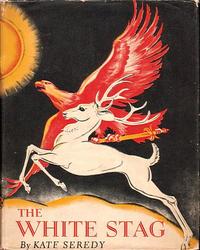
The White Stag is a children's book, written and illustrated by Kate Seredy. It won the Newbery Medal for excellence in American children's literature and received the Lewis Carroll Shelf Award. The White Stag is a mythical retelling that follows the warrior bands of Huns and Magyars across Asia and into Europe, including the life of Attila the Hun.
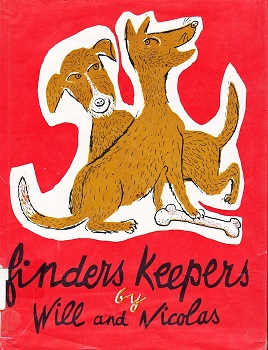
Finders Keepers is a book written by William Lipkind and illustrated by Nicholas Mordvinoff. Released by Harcourt, it was the recipient of the Caldecott Medal for illustration in 1952.

During the 1793 yellow fever epidemic in Philadelphia, 5,000 or more people were listed in the register of deaths between August 1 and November 9. The vast majority of them died of yellow fever, making the epidemic in the city of 50,000 people one of the most severe in United States history. By the end of September, 20,000 people had fled the city, including congressional and executive officials of the federal government. Most did not return until after the epidemic had abated in late November. The mortality rate peaked in October before frost finally killed the mosquitoes and brought an end to the outbreak. Doctors tried a variety of treatments but knew neither the origin of the fever nor that the disease was transmitted by mosquitoes.

The Moffats is the first in a series of four children's novels by American author Eleanor Estes. It tells the story of four young children and their mother who live in a small town in Connecticut. Their adventures are based on Estes' memories of her childhood and focus on a working-class, single-parent American family during World War I.

Good Masters! Sweet Ladies! Voices from a Medieval Village is a 2007 children's book written by Laura Amy Schlitz. The book was awarded the 2008 Newbery Medal for excellence in children's literature.

The Middle Moffat by Eleanor Estes is the second novel in the children's series known as The Moffats. Published in 1942, it was a Newbery Honor book. The title comes from Janey Moffat, who feels a little lost among her three siblings. Being neither the oldest or youngest, she decides to become the 'Middle Moffat' to help herself feel more important. The Moffats is set in small town Cranbury, Connecticut during World War I.

The evolutionary origins of yellow fever are most likely African. Phylogenetic analyses indicate that the virus originated from East or Central Africa, with transmission between primates and humans, and spread from there to West Africa. The virus as well as the vector Aedes aegypti, a mosquito species, were probably brought to the western hemisphere and the Americas by slave trade ships from Africa after the first European exploration in 1492. However, some researchers have argued that yellow fever might have existed in the Americas during the pre-Columbian period as mosquitoes of the genus Haemagogus, which is indigenous to the Americas, have been known to carry the disease.

Molly Caldwell Crosby is a journalist and author of three literary nonfiction books: The American Plague, Asleep, and The Great Pearl Heist.

Diseases and epidemics of the 19th century included long-standing epidemic threats such as smallpox, typhus, yellow fever, and scarlet fever. In addition, cholera emerged as an epidemic threat and spread worldwide in six pandemics in the nineteenth century.

Christina Soontornvat is an American author, educator, and mechanical engineer. She won two Newbery Honors in 2021 for the children's books A Wish in the Dark and All Thirteen: The Incredible Cave Rescue of the Thai Boys' Soccer Team, and another Newbery Honor in 2023 for the middle grade novel "The Last Mapmaker".



















